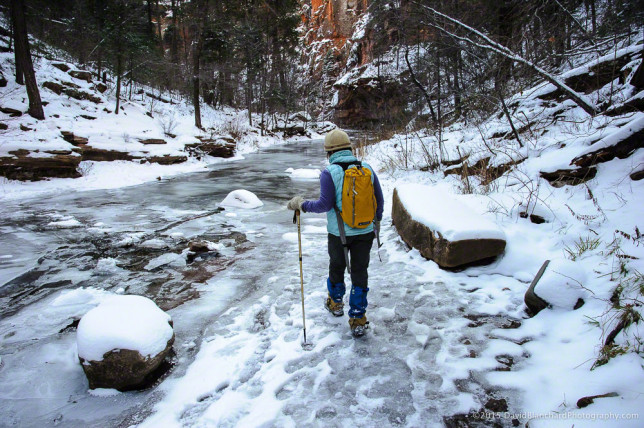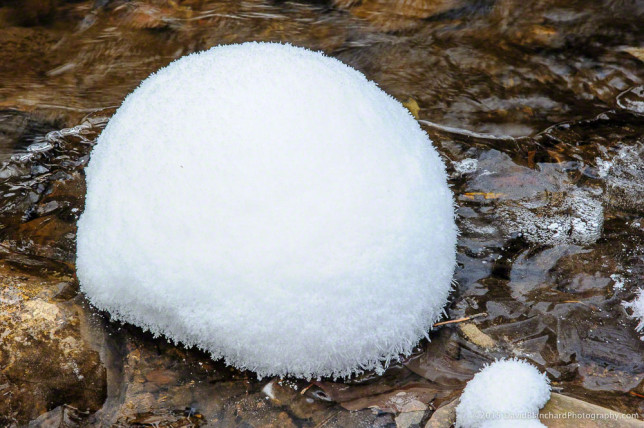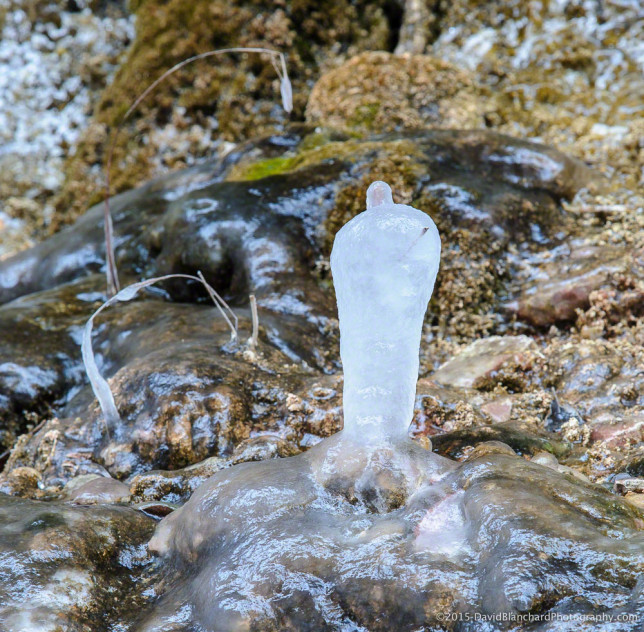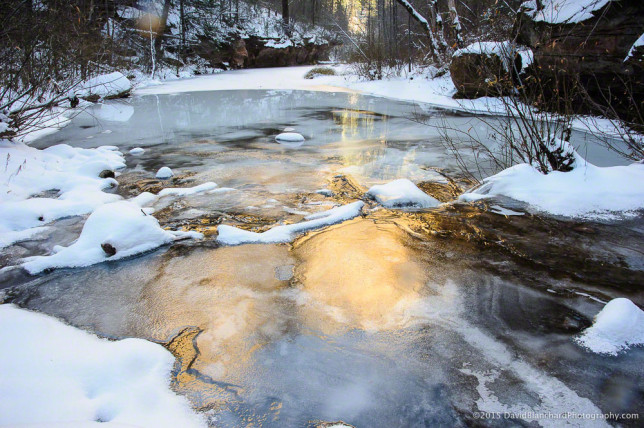After a pair of back-to-back snow storms followed by sub-zero (°F) overnight temperatures we decided it was time to visit West Fork Oak Creek Canyon and see how the ice was developing.
As anyone who has hiked in this canyon knows, the trail crosses the creek more than a dozen times before the end of the maintained trail. In the summer it’s a simple matter of either stepping on the stones or just walking in the water. Getting wet is not an option in the winter leaving the stepping stones or walking on the ice if it is safe.
Most of the crossings we encountered had a mixture of stones and thick ice and we had no trouble crossing the stream. For additional traction we were using our Kahtoola microspikes.

The very cold temperatures and patches of open water resulted in surface hoar (i.e., fern-like ice crystals directly deposited on snow, ice or already frozen surfaces) developing and creating some interesting textures.

There are several cliffs in the canyon with significant water seeps. Water drips from the large icicles and then refreezes at the ground creating free-standing ice stalactites as well as encasing grasses and small stems in strange and bizarre shapes.


In several locations the running water was moving across the top of the ice sheet producing mirror reflections of the canyon walls.


At the end of the maintained trail lies a narrow section of the canyon with deep water. Travel beyond this point requires getting wet in the warmer months or walking on thick ice in the winter. This brief spell of cold temperatures was not enough to create safe ice (I know; it cracked on me when I tested it!) so we had to turn back at this point.